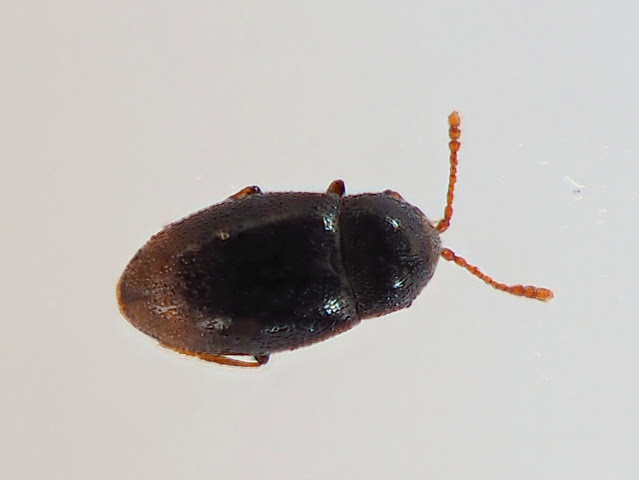It got very cold, two coats cold, snowing cold.
A few summer migrants braved it and Sand Martin, Swallow, Wheatear, Whimbrel and Black-tailed Godwit have all put in appearances, mostly brief and transitory. The Canada Goose stayed a couple of days and has been replaced by a Whooper Swan which is happily grazing with the Greylag hordes. Fair numbers of Pinkfeet have been dropping in daily. With the Pinkfeet was a problem goose, distant across the fields and there was a lot of haze so I couldn't get a sharp image. I think it was a Bean Goose, which would have been a patch tick but I was unsure due mostly to the poor visibility. It was intermediate in size between the Pinkfoot and Greylag, much browner than Greylag but lacking that darkened head and neck of Pinkfoot. The bill looked larger than Pinkfoot with obvious orange. No photo was possible due to distance and haze. In the end one to let go I think but I was quite close to claiming it.
Near the feeders, back garden.
The Orkney Vole project has moved on a step with use of the Olympus TG4 remotely. Basically, I stuck it on a tripod, set it to fire every 7 seconds, set the delay at half an hour, and left the voles some food.
 |
| Orkney Vole on a very frosty morning. |
Far too chilly for mothing but on an expedition to Marwick from the Birsay side I took a couple of grass clump samples. Not a whole lot in them, but what was in there was very interesting. Best was a new Ichneumon for the county (and as I've just become Ichneumonoidea recorder, perhaps the least knowledgeable county recorder of their target taxa in the UK!) which I was very pleased with, especially as I was within a cat's whisker of identifying it correctly under my own resources. In the end AC and GO corrected me and confirmed the beast as Ichneumon stramentarius, but a good effort for a beginner I thought.
 |
| Head and antennae, 30 segments I think. |
 |
| Annoying thread on crucial bit, Ichneumon stramentarius, a female. |
 |
| That little white dot on T4 is helpful. |
The other was also a Parasitica but a Diapriidae. Fortunately the good people on the international Hymenopterists Forum FB Group came to the rescue, put me in the correct family and genus and then DN suggested a species pair. I went to the key and after a bit of a fight, not least because there is a mistake in the key (how do you get to couplet 7? At 5 it should be 6 or 7 not 6 or 9.) I decided on Spilomicrus annulicornis which DN subsequently and kindly confirmed.
 |
| Careful viewing of the antenna is key to identification. |
 |
| Spilomicrus annulicornis, male, just under 5mm. |
I found this in the sample because I pulled out two beetle pupal cases, perhaps of Quedius or Philonthus and it emerged from these where it had presumably been sheltering. Spilomicrus, unlike most Diapriidae are parasitoids of beetles and not flies.
 |
| Spilomicrus annulicornis and pupal cases. |
I'm currently working on another hymenopteran, a sawfly. A combination approach of using the keys and looking at images has got me to Euura vaga, which would also be new to the county. I'm awaiting expert opinion on my rather flaky ID technique.
 |
| Putative Euura vaga. |
Not too many beetles at the moment, but I did attempt this Atomaria which I think is Atomaria rubida, well it keys there ok. They are very small, 1.6mm, and tricky, but Mike Hackston's key should have done the trick.
 |
| Atomaria rubida. |
An Otter was hunting eels again in The Shunan, I think a different one, a dog. It looked larger and the geese were frightened of it, unlike last time. I also came across these Otter tracks on Skaill Bay beach.
 |
| Otter tracks, see how its tail drags on the sand. |






No comments:
Post a Comment